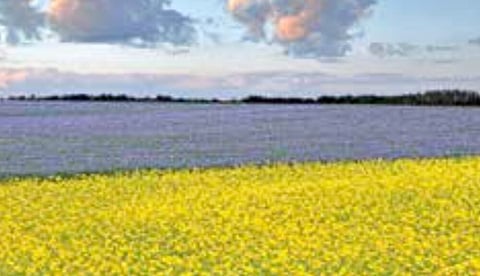

The culinary traditions of the Cree First Nation include pemmican and bannock, and the abundance of Saskatoon berries, wild blueberries and chokecherries. Today, Saskatchewan is known as "the bread basket of the world," Chef Dale McKay (Ayden Kitchen & Bar) tells me. "We have some of the best growing soil in the world." Almost all of Canada's chickpeas, lentils, durum wheat, flaxseed and mustard come from Saskatchewan, from which the majority of the world's lentils and mustard seeds are sourced. More than half of Canada's dried peas, oats and canola are from here, as is Canada's second largest beef cattle herd. Bison, elk and wild boar punctuate restaurant menus. Saskatchewan is the leading producer of wild rice in North America. Early settlers were Eastern European, and so traditional dishes include variations of pierogies, cabbage rolls and borscht.
Saskatchewan chanterelles are among the best in the world, and there is a proliferation of pine mushrooms, morels and blue melting caps. Local fish include pickerel, perch, and Diefenbaker trout. Asparagus, cabbage, carrots and heirloom tomatoes are staples, and while winter is harsh, in summer, the agricultural sectors harvest in overdrive.